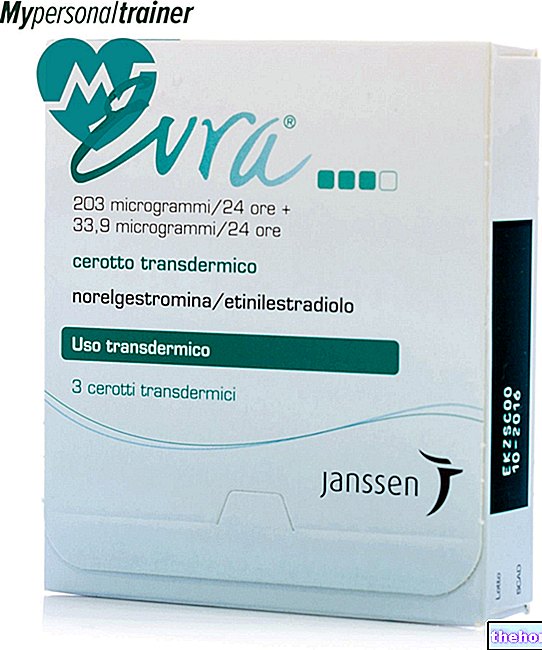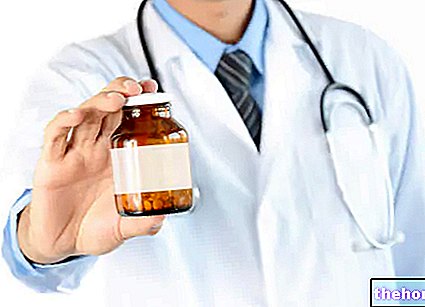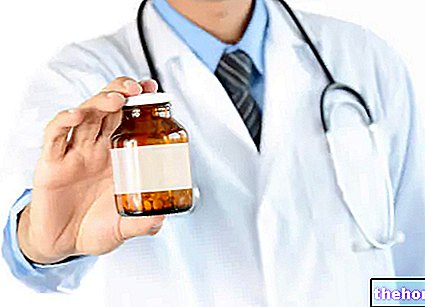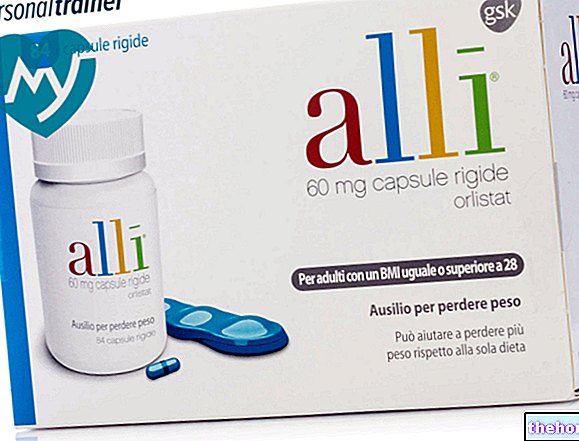Active ingredients: Ambroxol
MUCOSOLVAN 15 mg / 2 ml solution to be nebulised
Mucosolvan package inserts are available for pack sizes:- MUCOSOLVAN 15 mg / 2 ml solution to be nebulised
- MUCOSOLVAN 7.5 mg / ml solution to be nebulised
- Mucosolvan 30 mg tablets
- Mucosolvan children 30 mg suppositories
- Mucosolvan 75 mg prolonged-release hard capsules
- Mucosolvan 15 mg / 5 ml syrup
- Mucosolvan 60 mg granules for oral solution
- Mucosolvan 30 mg / 5 ml syrup
- Mucosolvan 15 mg gummy tablets
Why is Mucosolvan used? What is it for?
PHARMACOTHERAPEUTIC CATEGORY
Mucolytic.
THERAPEUTIC INDICATIONS
Treatment of secretion disorders in acute and chronic bronchopulmonary diseases (i.e. in the presence of cough and in case of difficulty in expelling phlegm from the bronchi because it is increased or thickened).
Contraindications When Mucosolvan should not be used
Hypersensitivity to the active substance or to any of the excipients. Severe liver and kidney disorders.
Precautions for use What you need to know before taking Mucosolvan
Ambroxol hydrochloride should be administered with caution in patients with peptic ulcer.
Interactions Which drugs or foods can modify the effect of Mucosolvan
Tell your doctor or pharmacist if you have recently taken any other medicines, even those without a prescription.
Following the administration of ambroxol the concentrations of antibiotics (amoxicillin, cefuroxime, erythromycin) in bronchopulmonary secretions and saliva are increased.
No interactions with other medicinal products have been reported.
Warnings It is important to know that:
In very few cases, severe skin lesions such as Stevens Johnson syndrome and toxic epidermal necrolysis (NET) have been observed concurrently with the administration of expectorants such as ambroxol hydrochloride. Most of these could be explained by the severity of underlying diseases. or other concomitant medications. In addition, in the initial phase of Stevens Johnson syndrome or toxic epidermal necrolysis (NET), patients may initially experience non-specific flu-like symptoms, such as fever, chills, rhinitis, cough and sore throat. Due to these misleading symptoms it is possible that symptomatic treatment with cough and cold therapy may be undertaken.
If new lesions of the skin or mucous membranes occur, consult your doctor immediately and discontinue treatment with ambroxol as a precaution. In case of impaired kidney function, Mucosolvan can only be used after consulting your doctor.
Pregnancy and breastfeeding
Ask your doctor or pharmacist for advice before taking any medicine.
Pregnancy
Ambroxol hydrochloride crosses the placental barrier. Preclinical studies have not shown any direct or indirect harmful effects on pregnancy, embryonal / fetal development, parturition or postnatal development.
Although preclinical studies and extensive clinical experience have not shown any harmful effects after the 28th week of gestation, it is advisable to take the normal precautions on taking drugs during pregnancy. Especially during the first trimester it is not recommended to take Mucosolvan. .
Feeding time
Ambroxol hydrochloride is excreted in breast milk. Although undesirable effects are not expected in breastfed infants, the use of Mucosolvan is not recommended during breastfeeding.
Fertility
Preclinical studies have not shown any effects directly or indirectly harmful to fertility.
Effects on ability to drive and use machines
From post-marketing experience there is no evidence of an effect on the ability to drive and use machines.
No studies on the ability to drive and use machines have been performed.
Dosage and method of use How to use Mucosolvan: Dosage
The following dosages are recommended unless otherwise prescribed:
Inhalation use:
Adults: 2-3 ampoules per day.
Children over 5 years: 2-3 ampoules per day.
Children up to 5 years: 1-2 ampoules per day.
In acute respiratory conditions, seek medical attention if symptoms do not improve or worsen during treatment with Mucosolvan.
Instructions for Use
Mucosolvan nebuliser solution can be used in various inhalation devices. It is miscible with physiological saline solutions and it is recommended to dilute it in equal parts (1: 1 ratio) to obtain an "optimal humidification of the air emitted by the" inhaler.
Mucosolvan 15 mg / 2 ml solution to be nebulised must not be mixed with other solutions whose resulting mixture has a pH greater than 6.3, such as alkaline solutions for nebulisation (Emser salts), since the increase in pH involves the precipitation of the free base of ambroxol or clouding of the solution.
Pre-cut vials, no file is required.
Since inhalation itself may lead to coughing, it is recommended that you breathe normally while inhaling.
It is advisable to warm the solution to body temperature before inhalation. In patients with bronchial asthma it is recommended to administer the usual bronchospasmolytic before inhalation.
Overdose What to do if you have taken too much Mucosolvan
In case of accidental ingestion / intake of an excessive dose of Mucosolvan, notify your doctor immediately or go to the nearest hospital.
If you have any questions about the use of Mucosolvan, ask your doctor or pharmacist.
No specific symptoms of overdose have been reported in humans to date. Symptoms observed in cases of accidental overdose and / or medication errors are consistent with the expected side effects of Mucosolvan at recommended doses and may require treatment. symptomatic.
Side Effects What are the side effects of Mucosolvan
Like all medicines, Mucosolvan can cause side effects, although not everybody gets them.
Adverse reactions are listed below by system organ class and frequency, according to the following categories:
Very common ≥ 1/10
Common ≥ 1/100, <1/10
Uncommon ≥ 1 / 1,000 to <1/100
Rare ≥ 1 / 10,000, <1 / 1,000
Very rare <1 / 10,000
Not known frequency cannot be estimated from the available data.Immune system disorders:
Not known: anaphylactic reactions including anaphylactic shock, angioedema and other hypersensitivity reactions.
Skin and subcutaneous tissue disorders:
Rare: rash, hives.
Not known: itching.
Nervous system disorders:
Common: dysgeusia (taste disturbance).
Gastrointestinal disorders:
Common: Nausea, oral hypoesthesia (numbness of the mouth and tongue).
Uncommon: vomiting, diarrhea, dyspepsia, abdominal pain, dry mouth.
Rare: dry throat.
Heartburn has also been reported.
Respiratory, thoracic and mediastinal disorders:
Common: pharyngeal hypoesthesia (numbness of the throat).
Compliance with the instructions contained in the package leaflet reduces the risk of undesirable effects. If any of the side effects gets serious or if you notice any side effects not described in this leaflet, please inform your doctor or pharmacist.
Expiry and Retention
Expiry: see the expiry date indicated on the package.
The expiry date refers to the product in intact packaging, correctly stored.
Warning: do not use the medicine after the expiry date indicated on the package.
Medicines should not be disposed of via wastewater or household waste. Ask your pharmacist how to dispose of medicines you no longer use. This will help protect the environment.
Keep this medicine out of the reach and sight of children.
Composition and pharmaceutical form
COMPOSITION
One ampoule contains: active ingredient: ambroxol hydrochloride 15 mg.
Excipients: citric acid; disodium phosphate; sodium chloride; water for injections.
PHARMACEUTICAL FORM AND CONTENT
Nebulizer solution - 6 ampoules of 2 ml.
Source Package Leaflet: AIFA (Italian Medicines Agency). Content published in January 2016. The information present may not be up-to-date.
To have access to the most up-to-date version, it is advisable to access the AIFA (Italian Medicines Agency) website. Disclaimer and useful information.
01.0 NAME OF THE MEDICINAL PRODUCT
MUCOSOLVAN 15 MG / 2 ML SOLUTION TO NEBULIZE
02.0 QUALITATIVE AND QUANTITATIVE COMPOSITION
One vial contains:
active ingredient: ambroxol hydrochloride 15 mg.
For the full list of excipients, see section 6.1.
03.0 PHARMACEUTICAL FORM
Solution to be sprayed.
04.0 CLINICAL INFORMATION
04.1 Therapeutic indications
Treatment of secretion disorders in acute and chronic bronchopulmonary diseases.
04.2 Posology and method of administration
The following dosages are recommended unless otherwise prescribed:
Inhalation use:
Adults: 2-3 ampoules per day.
Children up to 5 years: 1-2 ampoules per day.
Children over 5 years: 2-3 ampoules per day.
Mucosolvan nebuliser solution can be used in various inhalation devices. It is miscible with physiological saline solutions and it is recommended to dilute it in equal parts (1: 1 ratio) to obtain an "optimal humidification of the air emitted by the" inhaler.
Mucosolvan nebuliser solution must not be mixed with other solutions whose resulting mixture has a pH greater than 6.3, such as alkaline nebulizer solutions (Emser salts). Precipitation of the free base of ambroxol hydrochloride or clouding of the solution may occur due to the increase in pH.
Since inhalation itself may lead to coughing, it is recommended that you breathe normally while inhaling.
It is advisable to warm the solution to body temperature before inhalation. In patients with bronchial asthma it is recommended to administer the usual bronchospasmolytic before inhalation.
In acute respiratory conditions, seek medical attention if symptoms do not improve or worsen during treatment with Mucosolvan.
04.3 Contraindications
Hypersensitivity to the active substance or to any of the excipients.
Severe liver and kidney disorders.
04.4 Special warnings and appropriate precautions for use
Ambroxol hydrochloride should be administered with caution in patients with peptic ulcer.
In case of impaired kidney function, Mucosolvan can only be used after consulting your doctor.
This medicinal product contains less than one mmol sodium (23 mg) per recommended single dose, i.e. essentially sodium-free.
In very few cases, severe skin lesions such as Stevens Johnson syndrome and toxic epidermal necrolysis (NET) have been observed concurrently with the administration of expectorants such as ambroxol hydrochloride. Most of these could be explained by the severity of underlying diseases. or other concomitant medications. In addition, in the initial phase of Stevens Johnson syndrome or toxic epidermal necrolysis (NET), patients may initially experience non-specific flu-like symptoms, such as fever, chills, rhinitis, cough and sore throat. Due to these misleading symptoms it is possible that symptomatic treatment with cough and cold therapy may be undertaken.
If new lesions of the skin or mucous membranes occur, consult your doctor immediately and discontinue treatment with ambroxol as a precaution.
04.5 Interactions with other medicinal products and other forms of interaction
Following the administration of ambroxol the concentrations of antibiotics (amoxicillin, cefuroxime, erythromycin) in bronchopulmonary secretions and saliva are increased.
No interactions with other medicinal products have been reported.
04.6 Pregnancy and lactation
Pregnancy
Ambroxol hydrochloride crosses the placental barrier. Preclinical studies have not shown any direct or indirect harmful effects on pregnancy, embryonal / fetal development, parturition or postnatal development.
Although preclinical studies and extensive clinical experience have not shown any harmful effects after the 28th week of gestation, it is advisable to take the normal precautions on taking medications during pregnancy. Especially during the first trimester it is not recommended to take Mucosolvan.
Feeding time
Ambroxol hydrochloride is excreted in breast milk. Although undesirable effects are not expected in breastfed infants, the use of Mucosolvan is not recommended during breastfeeding.
Fertility
Preclinical studies have not shown any effects directly or indirectly harmful to fertility.
04.7 Effects on ability to drive and use machines
From post-marketing experience there is no evidence of an effect on the ability to drive and use machines.
No studies on the effects on the ability to drive and use machines have been performed.
04.8 Undesirable effects
Adverse reactions are listed below by system organ class and frequency, according to the following categories:
Very common ≥ 1/10
Common ≥ 1/100,
Uncommon ≥ 1 / 1,000,
Rare ≥ 1 / 10,000,
Very rare
Not known frequency cannot be estimated from the available data.
Disorders of the immune system:
Not known: anaphylactic reactions including anaphylactic shock, angioedema and other hypersensitivity reactions.
Skin and subcutaneous tissue disorders:
Rare: rash, hives.
Not known: itching.
Nervous system disorders:
Common: dysgeusia.
Gastrointestinal disorders:
Common: nausea, oral hypoesthesia.
Uncommon: vomiting, diarrhea, dyspepsia, abdominal pain, dry mouth.
Rare: dry throat.
Heartburn has also been reported.
Respiratory, thoracic and mediastinal disorders:
Common: pharyngeal hypoesthesia.
04.9 Overdose
No specific symptoms of overdose have been reported in humans to date. Symptoms observed in cases of accidental overdose and / or medication errors are consistent with the expected side effects of Mucosolvan at recommended doses and may require treatment. symptomatic.
05.0 PHARMACOLOGICAL PROPERTIES
05.1 Pharmacodynamic properties
Pharmacotherapeutic group: expectorants, excluding combinations with cough suppressants; mucolytic; ATC code: R05CB06.
Preclinical studies have shown that ambroxol, the active component of Mucosolvan, increases respiratory tract secretions. It increases the production of pulmonary surfactant and stimulates ciliary activity. This results in an improvement in the flow and transport of mucus (mucociliary clearance). Clinical pharmacology studies confirmed the improvement in mucociliary clearance. The increased fluidity of secretions and mucociliary clearance favor expectoration and decrease the disturbance caused by coughing.
In COPD patients, long-term (6 months) treatment with Mucosolvan (Mucosolvan 75 mg prolonged-release hard capsules) resulted in a significant reduction in exacerbations after 2 months of treatment. The number of sick leave days as well as the number of days of antibiotic therapy were significantly lower in the group of patients treated with Mucosolvan prolonged-release hard capsules. Treatment with Mucosolvan prolonged-release hard capsules also resulted in a statistically significant improvement in symptoms (difficulty in expectoration, cough, dyspnoea, ascultatory signs) compared to placebo.
The local anesthetic effect of ambroxol hydrochloride was studied in the ocular instillation model in the rabbit and can be explained by its sodium channel blocking properties. Ambroxol hydrochloride was shown in vitro to block cloned neuronal sodium channels; binding was reversible and concentration dependent.
In vitro, the release of cytokines from the blood, but also of tissue-bound mononuclear cells and polymorphonuclear cells was significantly reduced by ambroxol hydrochloride.
05.2 Pharmacokinetic properties
Absorption:
Absorption of all immediate-release oral forms of ambroxol hydrochloride is rapid and complete, it is also linearly proportional to dose, within the therapeutic range. Maximum plasma levels are reached 1 to 2.5 hours after administration. of the immediate release formulation and after an average of 6.5 hours for the slow release formulation. The absolute bioavailability of a 30 mg tablet is 79%. The slow release capsules showed a relative bioavailability of 95% ( normalized dose) compared to a daily dose of 60 mg (30 mg twice daily) administered as an immediate-release tablet.
Distribution:
The distribution of ambroxol hydrochloride from plasma to tissues is rapid and pronounced: the lung is one of the organs with the highest drug concentration. The volume of distribution after oral administration has been estimated at 552 L. Within the therapeutic range. , plasma protein binding of ambroxol has been reported to be approximately 90%.
Metabolism and elimination:
Approximately 30% of the orally administered dose is eliminated via the first pass effect. Ambroxol hydrochloride is metabolised primarily in the liver by glucuronidation and is partly cleaved to dibromoantranilic acid (approximately 10% of the dose) in addition to other metabolites. minors. Studies in human liver microsomes have shown that CYP3A4 is responsible for the metabolism of ambroxol hydrochloride to dibromoantranilic acid.
Within 3 days of oral administration, approximately 6% of the dose was found in the free form, while approximately 26% of the dose was recovered in a conjugated form in the urine.
Ambroxol hydrochloride is eliminated with a half-life of approximately 10 hours.
Total clearance is in the range of 660 ml / min, renal clearance is approximately 83% of the total clearance.
Pharmacokinetics in particular populations:
In patients with hepatic dysfunction the elimination of ambroxol hydrochloride is reduced, resulting in approximately 1.3 to 2-fold greater plasma levels.
Other:
Age and gender do not influence the pharmacokinetics of ambroxol hydrochloride and therefore require no dose adjustment.
Foods do not affect the bioavailability of ambroxol hydrochloride.
05.3 Preclinical safety data
Ambroxol hydrochloride has a low index of acute toxicity. In repeated dose studies, oral doses of 150 mg / kg / day (4 weeks mouse), 50 mg / kg / day (52 and 78 week rats), 40 mg / day kg / day (rabbits 26 weeks) and 10 mg / kg / day (dogs 52 weeks) corresponded to no observable adverse effect dose levels (NOAELs) No target organ for toxicological effects was identified.
Intravenous toxicity studies with ambroxol hydrochloride in rats, using 4, 16 and 64 mg / kg / day, and in dogs using 45, 90 and 120 mg / kg / day (3 h / day infusions), did not show severe systemic and oral toxicity including histopathology. All adverse effects were reversible.
Ambroxol hydrochloride was shown to be non-embryotoxic and non-teratogenic in studies conducted in rats and rabbits when tested at oral doses up to 3000 mg / kg / day and 200 mg / kg / day, respectively. Fertility in both male and female rats was not affected by doses up to 500 mg / kg / day. The "no observed adverse effect level" (NOAEL) during peri- and postnatal development is equal to 50 mg / kg / day, while doses of 500 mg / kg / day have shown a slight toxicity on the pregnant woman and on the offspring, which manifests itself with a delay in the increase in body weight and with a reduction in the size of the births.
Genotoxicity studies in vitro (Ames test and chromosomal aberration test) and in vivo (mouse micronucleus test) did not reveal any mutagenic potential of ambroxol hydrochloride.
Ambroxol hydrochloride was not shown to be potentially carcinogenic in carcinogenicity studies conducted in mice (50, 200 and 800 mg / kg / day) and in rats (65, 250 and 1000 mg / kg / day) when treated with a diet for 105 and 116 weeks respectively.
06.0 PHARMACEUTICAL INFORMATION
06.1 Excipients
citric acid, disodium phosphate, sodium chloride, water for injections.
06.2 Incompatibility
Mucosolvan 15 mg / 2 ml solution to be nebulised must not be mixed with other solutions whose resulting mixture has a pH greater than 6.3, since the increase in pH leads to the precipitation of the free base of ambroxol.
06.3 Period of validity
5 years.
06.4 Special precautions for storage
This medicine does not require any special storage conditions.
06.5 Nature of the immediate packaging and contents of the package
Amber glass vials.
Box of 6 ampoules of 2 ml.
06.6 Instructions for use and handling
For inhalation use: to 1 vial of Mucosolvan it is possible to add:
beclomethasone dipropionate 2 ml susp. 0.4%; betamethasone disodiophosphate 1 tablet 0.5 mg or 1 vial 1.5 mg; fenoterol drops 1 ml sol. 0.1%; ipratropium bromide 1 ml sol. 0.025%, salbutamol 1 tab. 2 mg or 5 drops sol. 0.5%.
07.0 MARKETING AUTHORIZATION HOLDER
Boehringer Ingelheim Italia S.p.A.
Via Lorenzini, 8
20139 Milan.
08.0 MARKETING AUTHORIZATION NUMBER
MUCOSOLVAN 15 mg / 2 ml solution for nebulisation, 2 ml ampoules AIC n ° 024428043
09.0 DATE OF FIRST AUTHORIZATION OR RENEWAL OF THE AUTHORIZATION
June 1981
Renewal
01.06.2010
10.0 DATE OF REVISION OF THE TEXT
AIFA determination of 29 October 2013




























